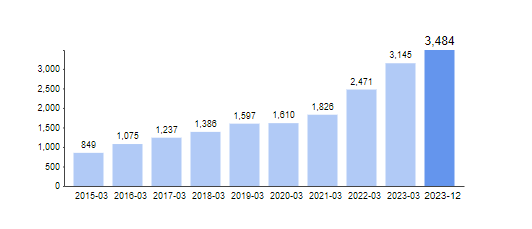The coverage of markets on the trading platforms for AI stock prediction/analysis is critical because it defines the assets and markets that you are able to access. With a platform that offers broad coverage, you can diversify your portfolio and avail of opportunities across the globe. It is also possible to adjust to various trading strategies. Here are 10 suggestions on how to evaluate the coverage offered by platforms.
1. Evaluate Supported Asset Classes
Stocks: Ensure that your platform is compatible with major stock exchanges like NYSE, NASDAQ LSE and HKEX and includes mid, small and large cap stocks.
ETFs - Check to see whether your platform can support an extensive selection of ETFs which offer exposure in many diverse regions, sectors or themes.
Options and futures. Check if the platform is able to handle derivatives, such as options, futures and other instruments leveraged.
Forex and commodities: Determine if the platform supports currency pairs, precious metals, agricultural commodities, and energy commodities.
Cryptocurrencies. Find out if they support all the major cryptocurrencies and altcoins (e.g. Bitcoin, Ethereum).
2. Check coverage in the geographic area.
Global markets. Your platform should cover the most important global markets that includes North America Europe Asia-Pacific and emerging countries.
Regional focus Make sure that the platform specializes on specific regions or markets that coincide with your trading interests.
Local exchanges - Examine for local or regional exchanges that relate to your location and strategy.
3. Comparing Real-Time Data to Delayed Data Delayed Data
Real-time information - Make sure the platform provides real-time market information to aid you in making quick choices, especially for active traders.
Delayed data: Discover whether you can obtain delayed data for free or at a reduced cost. This may be enough for long-term investors.
Latency of data. Check if the platform reduces delays for real-time information feeds, especially in the case of high-frequency trading.
4. Review Historical Data Available
Historical data depth Check that the platform has ample data (e.g. more than 10 years old) to test backtesting.
Granularity: Determine whether the historical data include the intraday granularity aswell as daily, weekly and monthly.
Corporate actions - Verify historical data to ensure that it includes stock splits or dividends, in addition to other corporate activities.
5. Check the market depth and the order book details
Level 2 data: Make sure that your platform is equipped with Level 2 data for price discovery and better execution.
Be sure to check for live bidding and asking spreads. This will guarantee that the pricing is correct.
Volume data: Ensure that the platform has detailed data on volume to analyze market activity and liquidity.
6. Examine the coverage of Indices Sectors
Major indices - Make sure your platform can support major indices like the S&P 500 (e.g. NASDAQ 100 or FTSE 100), for index-based benchmarking.
Data for specific industries: If you want to conduct a more specific analysis, look into whether there is data available for certain sectors.
Custom indices: Verify whether the platform permits the creation of or tracking of custom indices based on your requirements.
7. Assess the Integration of Sentiment Data and News
News feeds : Make sure you have a platform that integrates live news feeds. Ideally, they should come from reputable media outlets (e.g. Bloomberg and Reuters) to cover the most important market news events.
Sentiment analysis: Check whether the platform offers sentiment analysis tools that are based on news media, social media, or other data sources.
Event-driven strategies (e.g. earnings announcements or economic reports) Verify if your platform allows trading strategies that rely on events.
8. Make sure you are aware of Multi-Market Trading Capabilities
Trading in cross-markets: The system should allow trading in different markets or asset classes using a single user interface.
Conversion to currency Check if you can convert currencies automatically for international trades and if there are multi-currency account options.
Support for different time zones It is important to ensure that the platform allows trading on global markets in different time zones.
9. Examine coverage of alternative data sources
Alternative data - Examine to determine if there are alternative sources of data that can be included in the platform (e.g. web traffic, satellite imagery or credit card transactions). This will provide you unique insight.
ESG data - Make sure that the platform provides environmental, governance, and social data (ESG). This is essential for a the socially conscious investment.
Macroeconomic data: Ensure that the platform provides macroeconomic indicators (e.g., inflation, GDP, interest rates) for fundamental analysis.
Review the User Feedback and Review the Market Reputation
User feedback: Use reviews from users to assess the reliability of the platform and market coverage.
Reputation in the industry: Check if the platform has been approved by industry experts in terms of market coverage.
Case studies: Look for testimonials or case studies that showcase the platform's effectiveness in specific markets or asset classes.
Bonus Tips
Trial period: Try the demo or trial version for free to evaluate the market coverage of the platform as well as data quality.
API access: Verify that your platform's API allows access to market data in a programmatic manner to run custom analyses.
Support for customers: Make sure the platform has assistance for any market-related questions or data-related issues.
With these suggestions you can precisely assess the coverage of an AI analysis and stock prediction platforms. You can then choose a trading platform that offers you the market and the data you require for successful trades. You can broaden your portfolio and take advantage of new opportunities with the help of comprehensive market coverage. View the top rated best ai trading app blog for blog tips including best ai stock, investment ai, trading with ai, ai for stock trading, investment ai, artificial intelligence stocks, chart ai for trading, trade ai, incite ai, ai trader and more.

Top 10 Tips To Evaluate The Educational Resources Of Ai Stock-Predicting/Analyzing Trading Platforms
It is crucial for investors to evaluate the educational resources offered by AI-driven trading and stock prediction platforms so that they can be able to use the platform efficiently, understand results and make educated decisions. Here are the 10 best methods to evaluate the effectiveness and quality of these educational resources.
1. The most comprehensive tutorials and guides
TIP: Find out if the platform offers instructions or user guides designed for beginners and advanced users.
What's the reason? Clear instructions help users to comprehend and navigate the platform.
2. Video Demos and Webinars
Find videos, webinars and live training sessions.
Why: Visual and interactive content can make complicated concepts easier to grasp.
3. Glossary of Terms
Tips: Make sure the platform provides the glossary or definitions of important financial and AI-related terms.
The reason: It helps newcomers understand the language used in the platform.
4. Case Studies and Real-World Examples
Tip: Evaluate if the platform includes cases studies or examples of how AI models have been applied in real-world situations.
Examples of practical use are used to demonstrate the efficiency of the platform, and enable users to relate to its applications.
5. Interactive Learning Tools
Tips: Search for interactive tools such as quizzes, simulators or sandboxes.
Why: Interactive tools let users practice and test knowledge without risking real money.
6. Regularly Updated Content
Tip: Assess whether the education materials are frequently updated to reflect changes in the market, new features, or regulatory changes.
The reason is that outdated information can lead to misunderstandings of the platform or its improper use.
7. Community Forums Help, Support and Assistance
Find active support forums and forums to ask questions or share your thoughts.
What's the reason? Expert and peer advice can help students learn and overcome issues.
8. Programs of Certification or Accreditation
Find out whether there are any certification or training courses accredited by the platform. that are offered on the platform.
The reason: Recognition of formal learning can increase confidence and inspire users.
9. Accessibility and user-friendliness
Tip: Check how easily accessible and user-friendly educational resources are.
Access to content is easy and allows users to study in a way that best suits their needs.
10. Feedback Mechanism for Educational Content
Tip: Check if you can provide feedback to the platform regarding the educational materials.
What is the reason: Feedback from users helps increase the value and quality of the content.
A variety of learning styles are available.
Ensure the platform offers a variety of types of learning (e.g., audio, video, text) to accommodate different learning styles.
If you take the time to carefully analyze every one of these elements, you will be able to assess whether or not the AI-powered stock prediction system and trading system offers robust educational tools that can aid you to maximize its capabilities and take informed trading decisions. Follow the recommended what is it worth on stock analysis app for blog advice including ai trading platform, ai investing app, ai stock picker, best stocks to invest in, ai stock market, ai trading platform, best ai stocks, artificial intelligence stocks, best ai copyright trading bot, ai trading tools and more.
